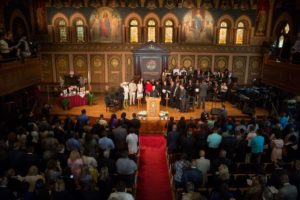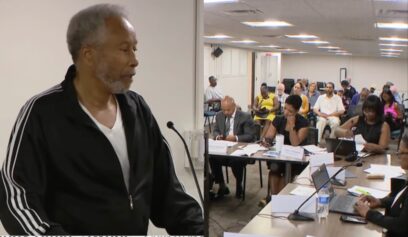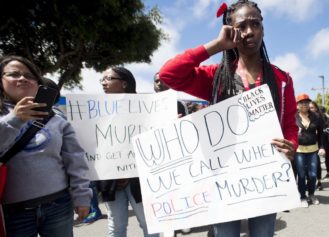
The descendants of 272 enslaved workers sold by Georgetown University in 1838 gathered for a worship service hosted by the school Tuesday, April 18. (Photo by Allison Shelley/For The Washington Post)
In a continued effort to atone for its ties to slavery, Georgetown University hosted a worship service of remembrance and repentance on Tuesday, April 14, gathering the descendants of close to 100 enslaved workers who were sold to keep the budding college afloat.
A financial crisis that threatened the existence of the university in 1838 prompted school leaders to sell 272 of its enslaved workers in order to satisfy its debt(s). The sale, which included men, women and children, earned the school roughly $3.3 million.
The mass auction became well-known just last year, as Georgetown, along with a number of other universities, took steps to address the history of slavery on its campus. The institution has since struggled, however, with how to respond to new knowledge of its dark past.
Tuesday’s service, which united close to 100 descendants of the former enslaved workers for the first time, was just part of a full day of events in which Georgetown renamed a building in honor of the first of the 272 workers listed on the bill of sale, The Washington Post reported.
Sandra Green Thomas, who has emerged as a sort of leader among the new community of descendants, delivered a few words at the service.
“Their pain was unparalleled,” Thomas said of the group’s ancestors. “Their pain is still here. It burns in the soul of every person of African-American origin in the United States. All African-Americans have hungered and thirsted for the bounty of America.”
*She went on to say that the oppression suffered at the hands of the Jesuit priests, who once headed the university, is still being experienced today by the descendants of the enslaved workers. Yet still, Thomas noted that the purpose of Tuesday’s service was penance and forgiveness.
Georgetown University President John DeGioia offered an apology to the descendants, as did Bishop Barry Knestout, who led the service, according to The Washington Post. Rev. Tim Kesicki, president of the Jesuit Conference of Canada and the United States, also spoke at the service and commented on the Maryland Jesuits who owned the enslaved workers in the 1830s.
“Today, the Society of Jesuits who helped to establish Georgetown University and whose leaders enslaved and mercilessly sold your ancestors stand before you and say we have greatly sinned,” Kesicki said. “With the pain that will never leave us, we resist moving on but embrace moving forward with hope.”
Several groups of descendants have since joined together following revelations about their ancestry, and some are seeking greater response from the university. Some are asking that descendants be offered scholarships to the school, while one group proposed launching a $1-billion charitable foundation in honor of the enslaved workers. Others asked for a memorial to be erected on campus.
For descendant Jessica Tilson, however, Georgetown has already done enough. Thanks to medical research conducted by the university, Tilson’s 3-year-old daughter, who was born with a rare disease that could’ve killed her, is living happy and healthy.
“I know that Isaac and my other ancestors wouldn’t want me to be angry,” she said during the building dedication Tuesday. “Because they know that what happened to them was horrible, but they know that their great-great-great-great-granddaughter benefited from their sale.”
“I ask that you, Georgetown University, continue extending a helping hand … continue with your research.”


